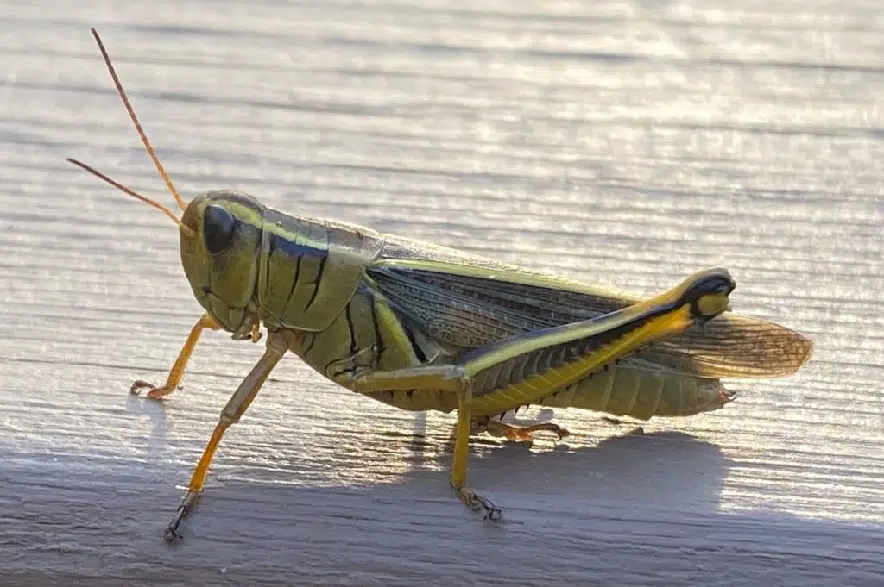Saskatchewan producers have been dealing with dry weather and grasshoppers all summer long.
Farmer Marion Ausmus said she’s seen a lot of grasshoppers in her fields this year, and the pests have really hurt her crops.
“They move from the outside edge of the field in, and if you don’t spray them, you’ll be left with nothing but bare ground,” said Ausmus.
There are tons of sprays that farmers can use to help get rid of grasshoppers, but according to Ausmus, spraying the grasshoppers is about more than just killing the pests.
“It’s actually more about prevention, so they aren’t laying eggs and going into your crops again next year,” said Ausmus.
Ausmus said the grasshoppers have been an added challenge this year for some farmers.
“It’s been challenging this year,” she said. “When you have a drought, it’s disheartening, and when you have to deal with grasshoppers added on to that, it’s a real blow.”
According to Meghan Vankosky, a research scientist with Agriculture and Agri-Food Canada, grasshopper populations have grown over the past couple of years.
“We’ve had warmer fall seasons, which has given them more time to lay eggs,” said Vankosky. “This year, it kind of became a perfect storm with the growing grasshopper population and this hot, dry spring.”
Adult grasshoppers were first noticed in Saskatchewan in June, and Vankosky said that was the earliest she has ever seen adult grasshoppers.
“I think a lot of farmers were caught off guard with how quickly grasshoppers were all over the place,” said Vankosky.
– With files from 650 CKOM’s Halyna Mihalik







